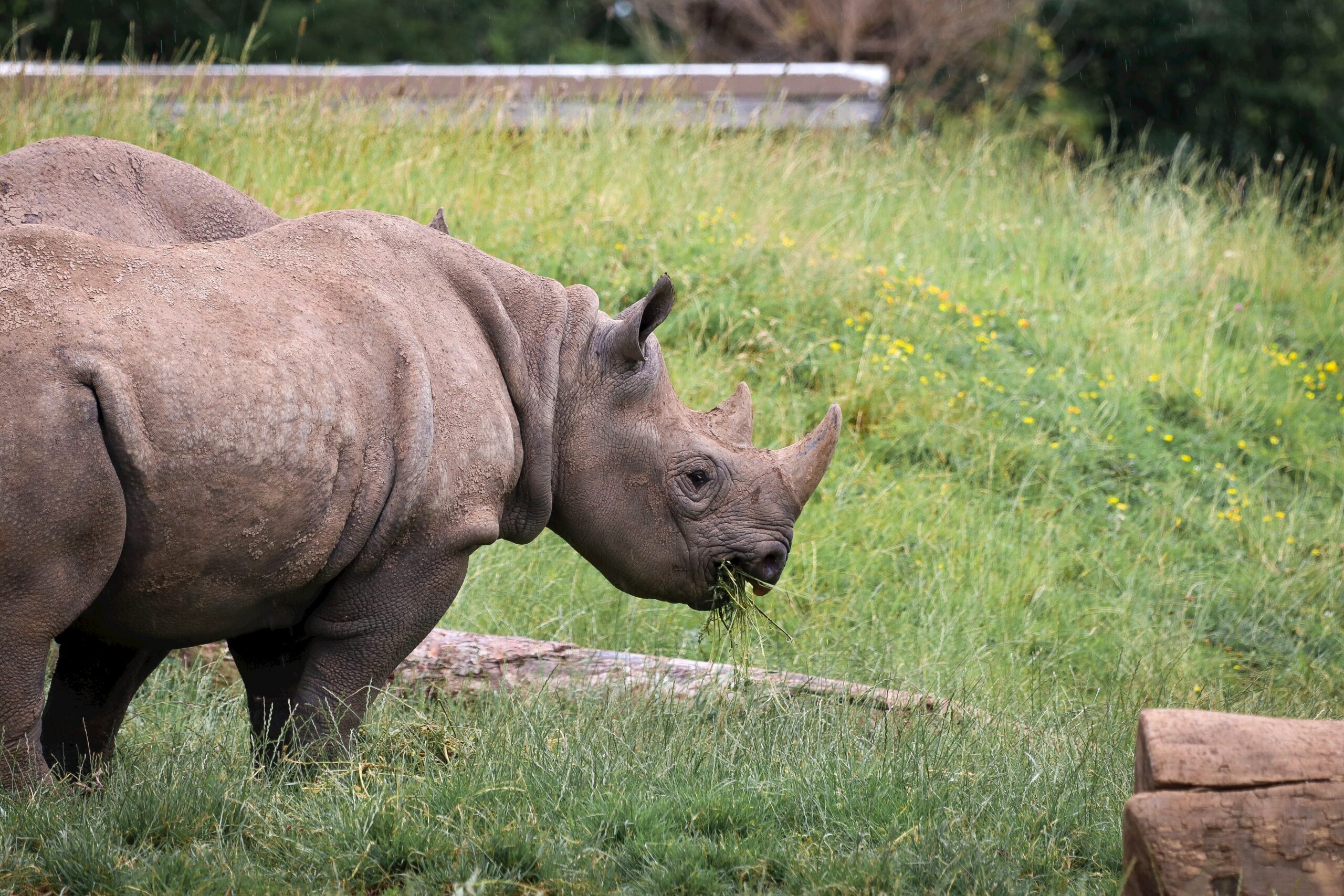10. Hawksbill Turtles
These turtles are one of the seven marine turtle species found in the subtropical and nearshore tropical waters of the Pacific, Atlantic, and Indian Oceans. According to The World Wide Fund for Nature, there are only about 20,000 to 23,000 nesting turtles, though it’s difficult to know the true population since these turtles wander the ocean quite a lot.
The population of these turtles seems to have reduced by at least 80% over the last 30 years, this is due to the illegal trade of their shells and products, accidentally being captured in fishing gear, damage to coral reefs, and many other reasons.
9. Black Rhinos
The number of these rhinos declined significantly between 1960 and 1995 because of poaching on large scales, and only 2% survived. Due to more rhino conservation, their numbers have doubled since those times, however, they are still critically endangered, with only about 5,630 individuals left in the wild. One subspecies of the Black Rhino was ruled extinct in 2011, and now there are only three subspecies left. Most of these rhinos are found today in Kenya, Namibia, South Africa, and Zimbabwe.
8. Tapanuli Orangutans
There are only about 800 Tapanuli Orangutans left, these are the rarest of all the great apes. This species was only recently recognized. There were only two species of orangutans, the Bornean and Sumatran orangutans until this third species was recognized. These Orangutans live in North Sumatra and are genetically different from the other Orangutan species.
7. Sunda Island Tigers
The Sunda Island tiger also known as the Sumatran tiger is the smallest subspecies of tiger on earth. These tigers are extremely rare with only about 600 remaining in the wild. This species is only found on the island of Sumatra in Indonesia. From the 1980s to 2020, the human population of Southeast Asia has nearly doubled. This has an impact on the number of tigers, whose habitat is growing smaller just like their populations.
6. Saola
Saola are bovines that usually reside in forests and are native to Laos and Vietnam. They look like deer and are critically endangered because of the destruction of their habitats, hunting, and the construction of roads and other such infrastructure. There are only a few hundred of these left, definitely under 750, and it’s possible individuals will be separated from each other and unable to breed.
5. Kākāpō
This rare species, also known as owl parrots are large, green parrots. They are the world’s only flightless parrot. They reside on the ground and are nocturnal. There are only 116 of these left, in southwestern New Zealand, which is the only area inhabited by them.
4. Red-fronted Macaws
Native to Bolivia, these red and green parrots are critically endangered, with only about 134-272 left in the wild. Some threats to these species include deforestation, agriculture, and other harmful human activities such as illegal trapping.
3. Amur Leopards
This species of leopard is extremely rare. There are only about 100 of them left in the wild! Their Population seems to be increasing and quite stable, but they are still considered critically endangered. Amur leopards are only found today in a quite small region of the far east of Russia and north-eastern China, which is one of the reasons for their small population. Some threats to their survival include the loss of their habitat, and roads and other such infrastructure being built for transportation. Right now, about three-fourths of the area they live in lies in areas protected by Russia and China, which means there is hope for this species.
2. Javan Rhinos
Javan Rhinos were once found all over southeast Asia, but because of habitat loss and hunting, their population is declining. They are the most rare rhino species, currently only found on the island of Java in Indonesia, with only 75 individuals left.
1. Vaquita
There are only around 18 of these species remaining. Vaquitas, a critically endangered porpoise, lives in a small area in the Gulf of California. They are the smallest cetaceans, which include whales, porpoises, and dolphins. Some threats to these species include damage to their habitat, fishing, and climate change.

